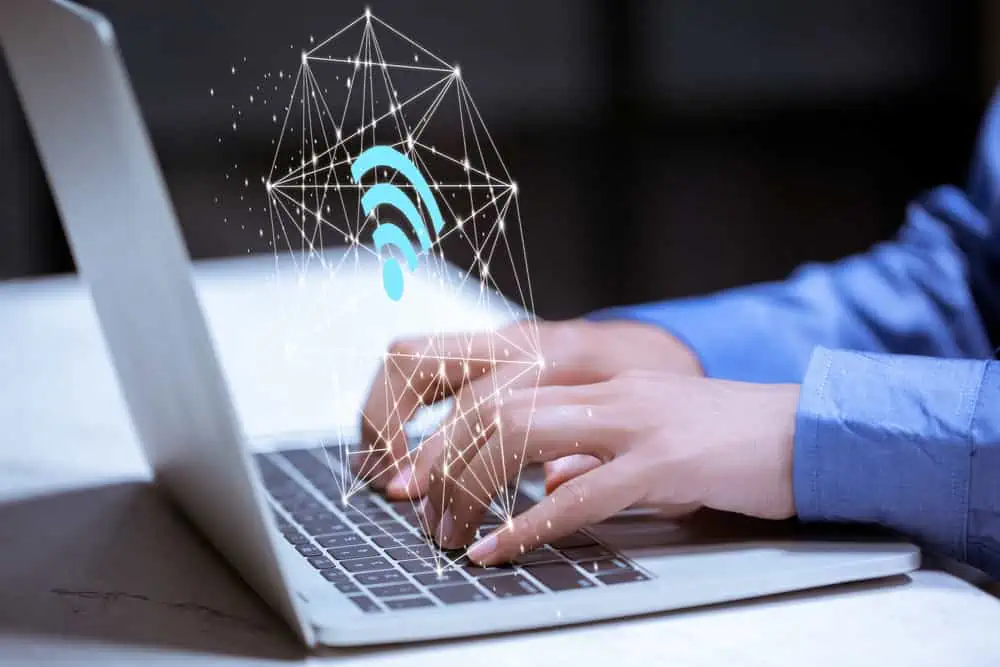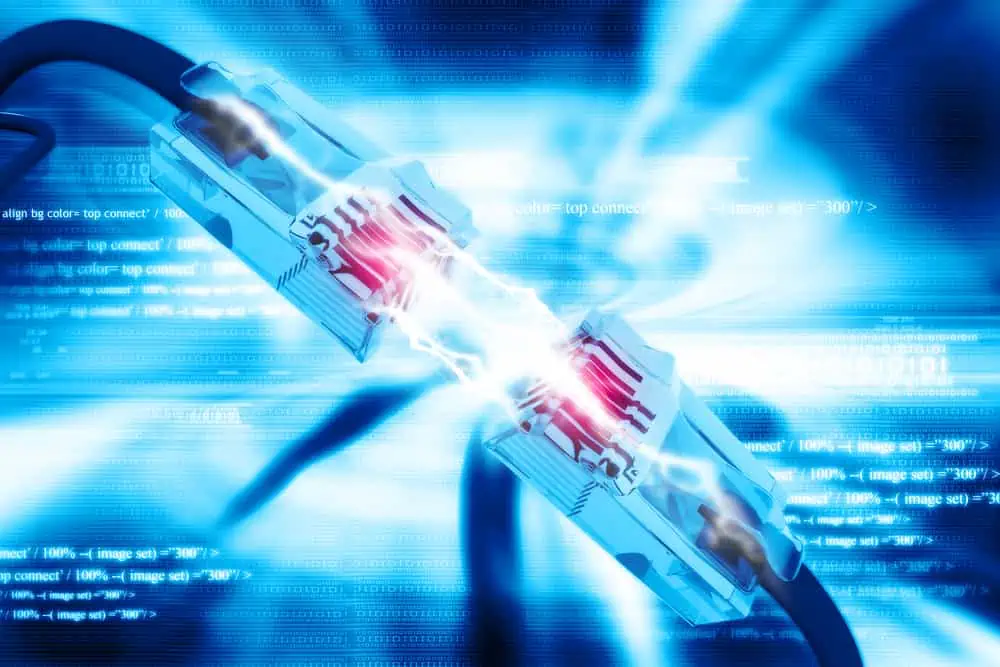Are you interested in learning about WiFi bridges? This article offers the information you need to understand the concept and functionality of this device.
Overview
A WiFi bridge, a.k.a wireless bridge, is a device that allows users to connect two networks or LANs wirelessly. It acts as a “bridge” between two networks, allowing them to communicate and share resources without a cable.
The device uses electromagnetic signals called radio waves to establish the wireless connection. It receives data packets from one network and alters them into a wireless signal.
Then, it sends the data packet from the network to another network. That being said, the wireless bridge was developed by Radia Perlman, a computer scientist, and engineer, in 1980.
Generally, this device has two types – point-to-point W-iFi bridges and point-to-multipoint Wi-Fi bridges. Point-to-point bridges help to connect two networks or LANs directly.
Meanwhile, a point-to-multipoint bridge connects several networks or LANs to a central network.
Features of a WiFi Bridge
Now that we know what a Wi-Fi bridge is, some of its significant features are discussed below.
Capable of Wired Connection
Wi-Fi bridges are capable of wired connections regardless of their wireless nature. The device has ports for wired connections, such as Ethernet ports.
The ports allow the device to create a wired connection with other devices, such as computers and servers.
It Has an Antenna
Wi-Fi bridges feature antennas that send radio waves or microwaves from one point to another. The antennas are usually one or two, depending on the kind of WiFi bridge.
Furthermore, this device offers two types of antennas – directional and omnidirectional. Omnidirectional antennas send signals in all directions.
Meanwhile, directional antennas send signals in only one direction.
Omnidirectional antennas are best for establishing connections over a wide area. On the other hand, directional antennas help connect network devices that are far apart.
It Supports Several Wireless Protocols
Wireless bridges support multiple wireless protocols or standards, such as Wi-Fi 802.11a/b/g/n/ac/ax. These protocols determine the specifications for wireless communication.
Those specs include data rates, frequency bands, and security. Furthermore, they determine the bridge’s speed, range, and compatibility with other wireless devices.
Thus, by supporting multiple protocols, the bridge can communicate with several Wi-Fi-enabled devices, such as laptops, mobile phones, and IoT devices.
It Has a Random Access Memory (RAM)
RAM is a type of memory that stores temporary data and instructions actively used by a device’s CPU. This allows the device to access needed data for quicker output and effective performance.
A Wi-Fi bridge needs RAM for different reasons, such as data processing. Specifically, as data packets travel over the wireless connection, the bridge’s CPU needs to access and use the data swiftly.
Thus, the RAM offers temporary storage for storing and processing the data packets.
It Support Dual-bandwidth
Another feature of this device is its support for dual bandwidth. This means it can operate on two different frequency bands simultaneously and individually.
These frequency bands are the 2.4 GHz and the 5 GHz bands. Moreover, the bridge’s dual-band support allows it to be compatible with various devices and networks.
This is because several mobile phones, laptops, and IoT devices support the 2.4 GHz and 5 GHz bands. Hence, the bridge can connect and communicate with various devices by supporting both frequency bands.
Therefore, it ensures compatibility regardless of the frequency band supported by the device. However, it is essential to mention that not all WiFi bridges support dual bandwidth.
Benefits of a WiFi Bridge
It can Serve as a Repeater
In some cases, a Wi-Fi bridge can act as a repeater.
In repeater mode, the device receives signals from an existing network and resends them. By doing that, it extends the range of the original network.
This is useful when the network signal is weak in some places or when you want to use a network for larger areas.
Relatively Cost-effective
This device can save money during network connection because you don’t need to buy or set up a physical network infrastructure.
It can help you save money on buying Ethernet cables and installation labor.
Flexibility and Mobility
Wireless bridges allow devices to connect to a network without cables.
That gives users more flexibility and freedom. Hence, you can easily move devices within the network infrastructure without the constraints of physical cables.
Reduces Cable Clutter and Promotes a Tidy Workspace
This device eliminates the need for cables.
In doing so, it creates a cleaner and more tidy environment. Moreover, the absence of cables contributes to a more organized and professional workspace.
It Offers Security Features
A Wi-Fi bridge has several security features to protect connected networks and the data transmitted.
For example, the device often supports encryption protocols like WPA2-PSK or WPA3. These security features encrypt the data transmitted over the wireless connection.
Hence, it makes it nearly impossible for unauthorized users to access the data.
Limitations of a WiFi Bridge
Signal Interference
Like most wireless devices, a Wi-Fi bridge can be vulnerable to signal interference.
This interference can come from other electronic devices, physical obstacles, or other wireless networks operating in the same frequency range. Besides, signal interference can lead to a reduction in signal quality and performance.
Limited Range
Typically, the range of a Wi-Fi bridge is limited compared to wired connections.
Some factors like distance, obstructions, and environmental conditions are to blame.
Prone to Security Risks
Even though it offers several security features, a Wi-Fi bridge is more prone to security risks than a wired connection.
These security risks include unauthorized access, eavesdropping, or data interception.
Vulnerability to Weather Conditions
Bad weather conditions, such as heavy rain and strong winds, can affect the performance of wireless bridges.
You may notice reduced signal strength during those events, potentially impacting the network connectivity.
Frequently Asked Questions
A Wi-Fi bridge connects two separate networks wirelessly. On the other hand, a repeater receives signals from a network, then retransmit them.
Therefore, it extends the range of the network. However, in some cases, a wireless bridge can serve as a repeater.
Nonetheless, a repeater cannot act as a Wi-Fi bridge.
The full meaning of Wi-Fi is Wireless Fidelity.
No, smartphones don’t have built-in wireless bridges.
The range of a wireless bridge depends on several factors. These include the type of wireless bridge, environmental conditions, and obstructions.
Generally, depending on those factors, the range of a Wi-Fi bridge can vary from a few hundred feet to several miles.
Yes, wireless bridges have RAM.
Conclusion
This device serves as a bridge between two separate networks, enabling wireless communication. Moreover, Wi-Fi bridges provide flexibility and mobility by eliminating the need for physical cables.
Furthermore, it supports various wireless protocols, allowing seamless communications between several Wi-Fi-enabled devices. In fact, this technology can serve as a repeater, extending the signal range of a network.
However, the device isn’t without flaws. For example, it is prone to signal interference from other electronic devices or physical obstacles.
It is also vulnerable to bad weather conditions. Nonetheless, a WiFi bridge is an effective solution to extend network coverage and connectivity.
I hope this article was helpful to you. The “Leave a Reply” form at the bottom of this page is available for you to leave your comments.
Alternatively, you can respond to the “Was this page helpful?” question below.
Finally, access other articles like this on our Internet & Networks Explained page.



